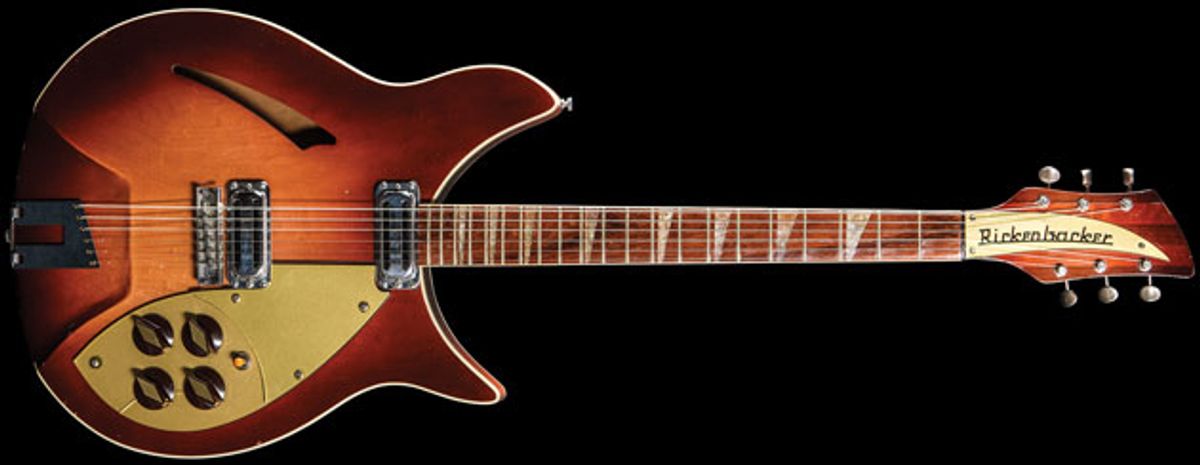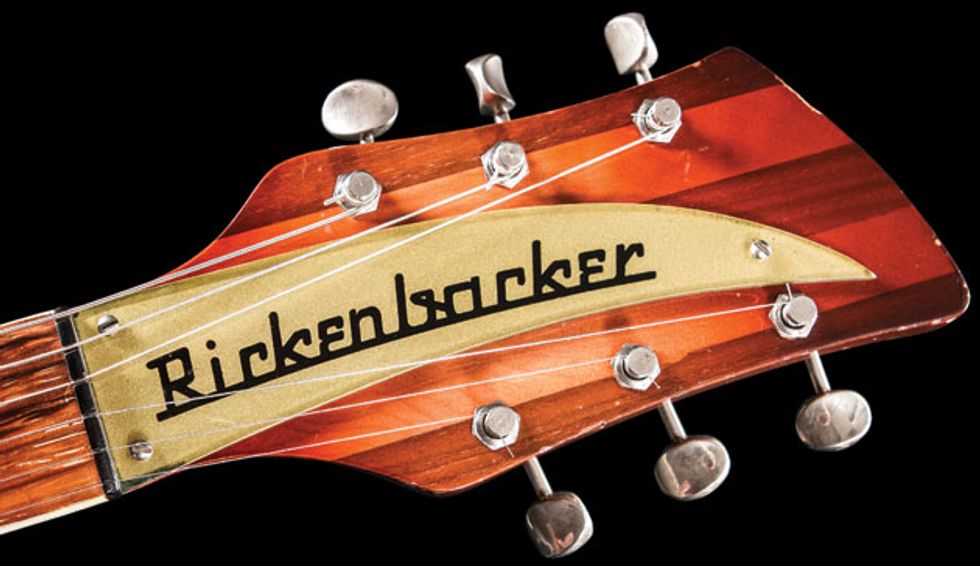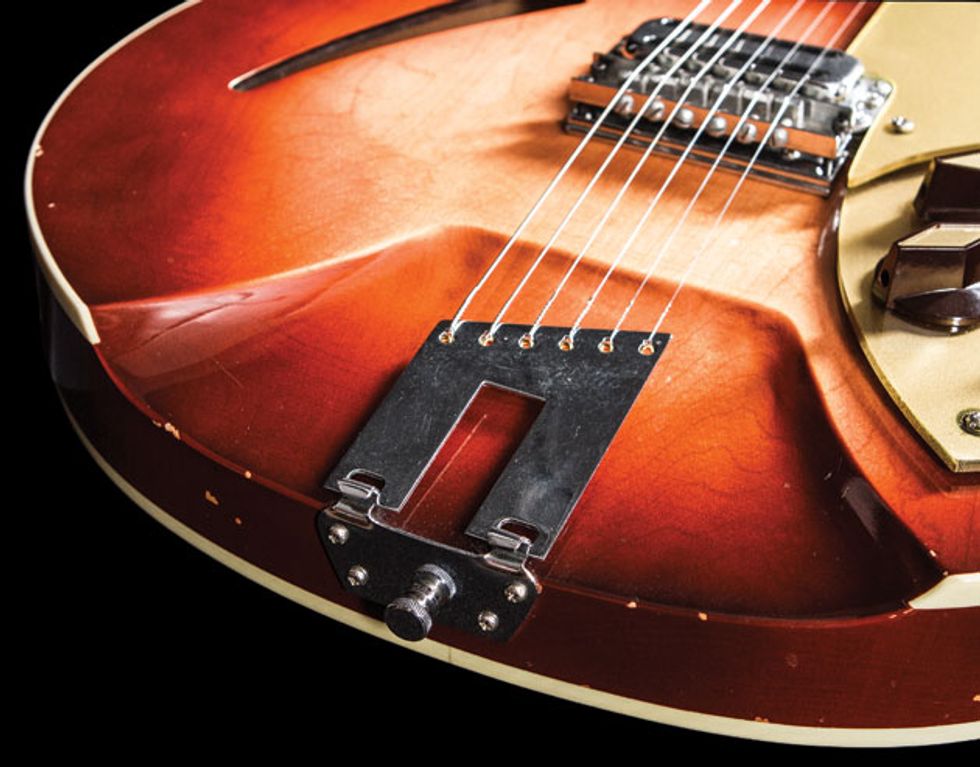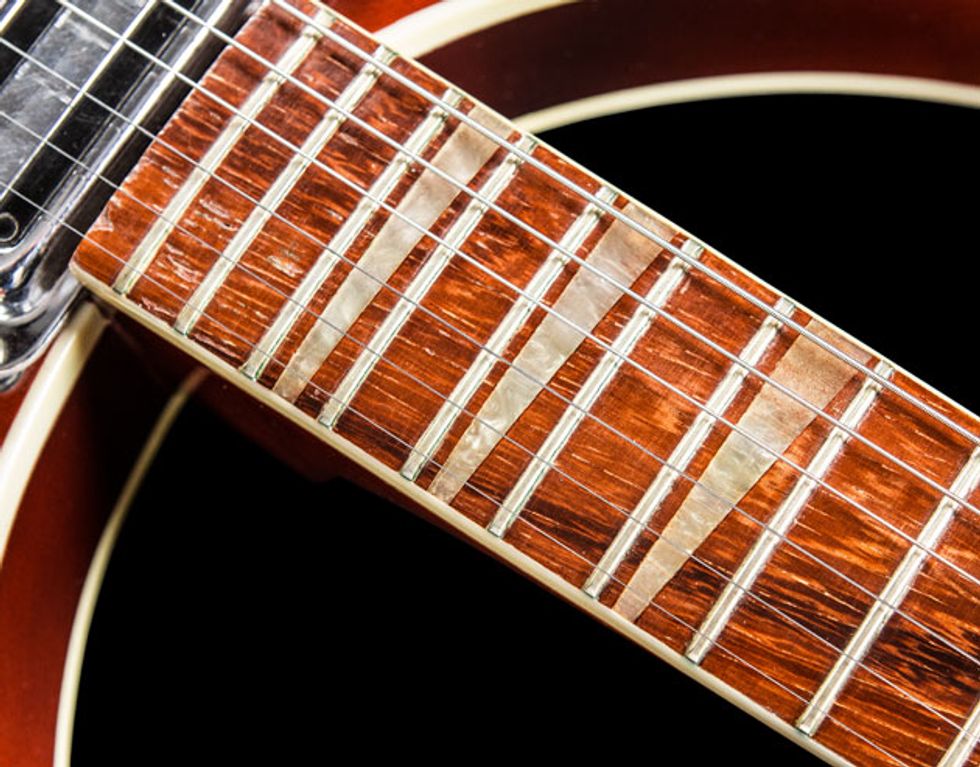
A classic Rick stays sharp thanks to European styling and its historic “glo.”
Adolph Rickenbacker began a successful Los Angeles, California, tool-and-die business in the 1920s, which eventually provided metal parts for guitar companies like National. In 1932, he and two former National employees, George Beauchamp and Paul Barth, designed and marketed the first “Frying Pan” electrified lap-steel guitar.
The shallow headstock angle on this 360 is a signature of Rickenbacker’s electric guitar designs. This one sports original tuners and scars from years of play.
F.C. Hall, owner of Radio and Television Equipment Company (Radio-Tel), purchased the Electro String Company from Adolph Rickenbacker in 1953. Hall revamped the business and focused on standard electric guitars rather than steels. In early 1954, German guitar maker Roger Rossmeisl was hired, and his unique European-inspired designs gave Rickenbacker guitars a distinctive appearance that continues today.
by other companies.
This look can be seen on the series of guitars that debuted in 1958 and eventually evolved into some of the company’s most famous models. This was a line of semi-acoustic instruments known as the Capri series. The method of construction devised by Rossmeisl for these instruments was very unusual when compared to the traditional techniques used by other companies. The bodies started as a solid block of wood, which was then hollowed out to some extent from the underside, and a separate back was later attached. To complete the unique look, a graceful depression was carved in the lower front for the tailpiece. The original Capri models were 2 1/8” thick. By 1962, a 1 1/2” body depth became standard. The series consisted of 12 models: the small-bodied, three-quarter-sized 310, 315, 320, and 325; the standard full-sized 330, 335, 340, and 345; and the deluxe full-sized 360, 365, 370, and 375. Models ending in zero had no vibrato, while those ending in the number five had one.
To complete the unique look of the Capri series, a graceful depression was carved in the front of the lower bout for the trapeze tailpiece, adding an additional contour to the already shapely axe.
The 1959 360 pictured has the features most often associated with a late-’50s deluxe Capri model. These include a bound maple neck, a gloss-finished rosewood fretboard with large triangle-shaped inlays, two single-coil “toaster” pickups, a maple body with binding on the top and back, a slash soundhole, and a trapeze tailpiece (replaced by the famous “R” tailpiece by 1964). The gold plastic pickguard and truss-rod cover, along with four diamond-shaped “oven” control knobs, give these early Ricks an impressive, eye-catching look. This example has an early version of what eventually became Rickenbacker’s most popular color: Fireglo. The original list price was $309.50. The current value for one in excellent all-original condition is $8,500.
This 360’s neck is bound maple with a gloss-finished rosewood fretboard that boasts large and distinctive triangle-shaped inlays. One of two single-coil toaster pickups is stationed immediately below the last fret.
Sources for this article include Rickenbacker Electric 12-String by Tony Bacon, Rickenbacker by Richard R. Smith, and The Rickenbacker Book: A Complete History of Rickenbacker Electric Guitars by Tony Bacon and Paul Day.




